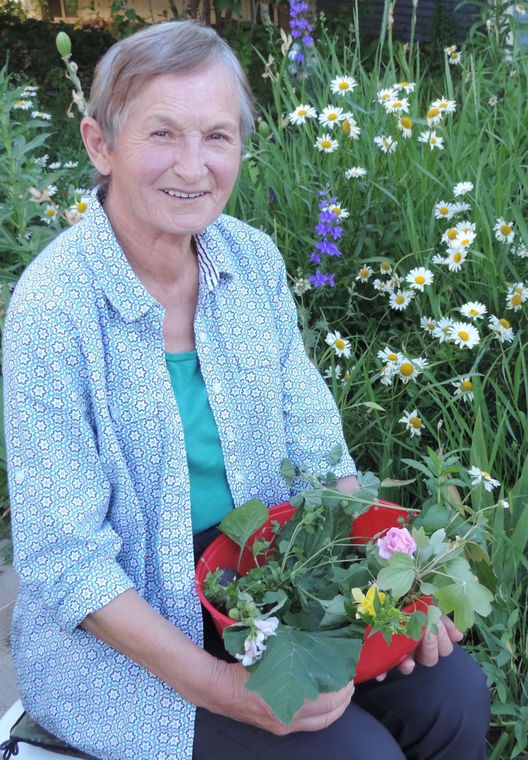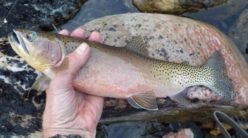With food shortages in Croatia during World War II, Marijana Dolsen’s parents turned to nature’s pantry to keep themselves and their children fed.
“I was born during the war, so my family ate all kinds of plants,” Dolsen said. “You just have to know what to look for. We used them for medicine, too. Since then, plants have become my life.”
Strolling around her yard on South Sixth Street, Dolsen gathers nearly two dozen edible plants, many considered weeds.
“This took only about 20 minutes to pick,” she says, rummaging through a bowl brimming with greens and flowers.
“These are delicious and filled with vitamins and minerals. The leaves of many plants can be used as salad greens. Or they’re perfect stewed with a little olive oil, garlic and salt.”
Underfoot, yet often overlooked, common wild plants, or those considered weeds, are becoming more popular to forage as tasty, nutrient-rich ingredients to supplement a meal. Through books and classes, expert foragers are helping people who want to return to their gathering roots.
Dolsen, a longtime member of the local Sawabi Chapter of the Idaho Native Plant Society, advises those who want to learn about wild edible plants to come to monthly meetings on Saturday mornings or Monday evenings from May to September.
“You can read guidebooks, but it’s best to ask questions from someone who can point out the slight differences between plants,” she said. “Some plants are similar and grow beside each other, but one is edible and the other is not.”
For example, poisonous white death camas often grows near the edible blue camas. Poisonous hemlock plants have been mistaken for edible watercress.
She also says to not pick plants growing near roads, where exhaust fumes from vehicles contaminate them or herbicides are often sprayed.
Ideally, plants should be gathered when they are beginning to grow and are tender. From her bowl, she pulls a few of her favorites that are easy to identify.
“Here is lambsquarters,” she said. “Use it as a substitute for spinach. It’s filled with vitamin A.”
Another plant, ground mallow, is prolific.
“The whole plant is edible. Chop it up and put it in stews and soups as a thickener. It soothes a sore throat, too.”
To make Greek dolmathes, broad plantain leaves can be used instead of grape leaves.
“The plant veins can be tough, so you can cook the leaves and scrape away part of the veins.”
Chickweed, with its small tender leaves and delicate tiny white flowers, tastes like sweetcorn.
Two weeds that are maligned in the United States, the dandelion and salsify, are appreciated in European cuisine.
“The dandelion is a wonderful plant,” she said. “The flowers can be made into wine or sautéed in butter. The leaves can be used in salad or stewed. During the war, people roasted the roots for a coffee substitute. Chicory was another coffee substitute.”
The salsify, a tall slender plant with a yellow flower, is prized for its roots.
“I couldn’t believe it. A few years ago, I bought some pickled salsify root at T.J. Maxx. It was made in France and was delicious.”
Other common plants include nettles, wild lettuce and goldenrod leaves. The petals of columbine, wild hollyhock and wild roses are also edible.
The oxeye daisy brightens local hillsides.
“For this one, the leaves are the best to eat. Wild plants should be harvested conservatively. Always leave the healthiest plants, so they can reproduce.”
In the desert, the moisture-laden fruit of prickly pear cactus can be eaten. “Roast it first and scrape off the needles.”
Dolsen says even in winter, food can be found outdoors.
“When you scrape away the bark of an aspen tree, you find the spongy white pith underneath and can survive on that.”
She looks forward to the fall, when berries will ripen.
“Wait to pick them until after the first frost when the starches in the berries have turned to sugar. We have so many berries: elder, thimble, Saskatoon, hawthorn and chokecherries and currants.
“In nature or your yard, there are so many wild plants and fruits to eat almost every season.”



